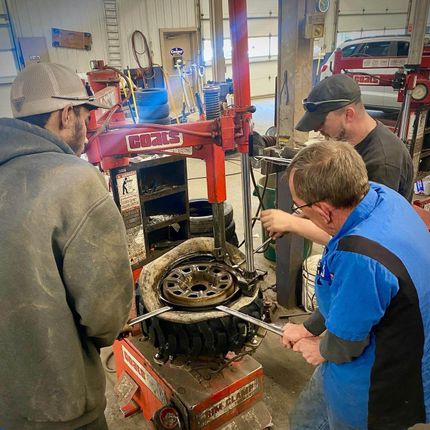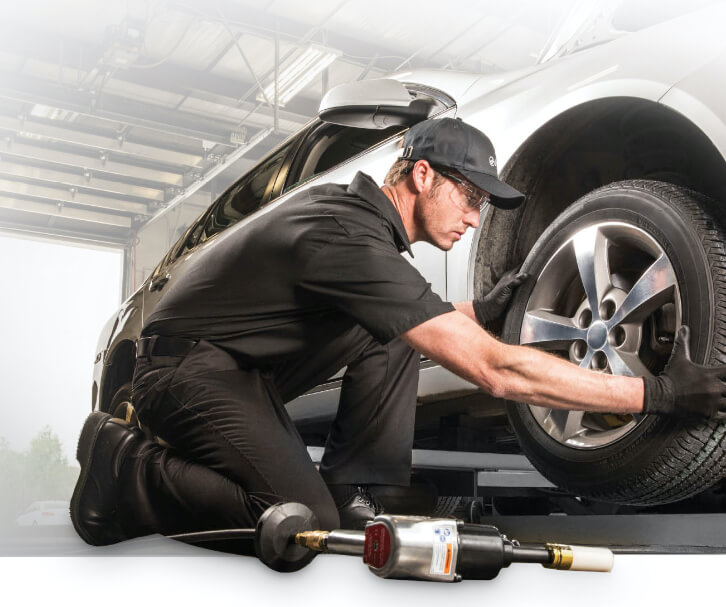Morris Tires: Your Destination for GMC Tires Service Excellence
Morris Tires: Your Destination for GMC Tires Service Excellence
Blog Article
Tire Solution: The Effect of Climate Condition
When it comes to making certain ideal efficiency and safety and security on the roadway, comprehending the impact of climate conditions on tire solution is vital. GMC Tire Service. In this conversation, we will check out the intricate connection in between climate problems and tire service, shedding light on the significance of weather-specific tire upkeep techniques and considerations.
Warmth and Tire Performance
When revealed to high temperature levels, tires experience modifications in efficiency that can significantly impact vehicle safety and security and handling. The warm created from extended driving or heat problems triggers the tire rubber to soften, bring about lowered walk life and boosted wear. As the rubber ends up being softer, the tire's grip when driving reduces, impacting braking ranges and total traction. In extreme instances, excessive warmth can even cause tire blowouts, positioning an extreme security danger to the car and its owners.

Cold Climate Impacts
Winter problems can have a significant influence on tire efficiency and safety. As temperatures decline, tire rubber can harden, bring about lowered traction on icy or snow-covered roadways. In cool climate, tires might likewise lose atmospheric pressure much more swiftly, which can affect taking care of and gas efficiency. Additionally, chilly temperature levels can cause tire sidewalls to tense, raising the danger of damages from craters or other road threats.
To minimize the effects of cool climate on tires, it is vital to frequently check tire stress and inflate them to the maker's advised degrees. Making use of winter season or all-season tires designed for winter problems can also boost traction and grasp on icy or snowy roadways. Proper tire upkeep, consisting of routine examinations for wear and damages, comes to be a lot more vital during chillier months to guarantee ideal efficiency and safety and security.
Rainy Issues Impact
Throughout stormy conditions, tire efficiency and security can be substantially affected by the damp roadway surface areas and reduced visibility. The tread pattern of tires plays an essential duty in keeping grip on damp roads. Tires with worn-out footsteps are extra vulnerable to hydroplaning, where a layer of water accumulates in between the tire and the roadway surface, causing loss of grip. To combat this, motorists must on a regular basis examine their tires for sufficient walk depth and take into consideration purchasing tires particularly created for wet problems.
In addition, stormy weather condition can likewise decrease exposure, making it challenging for vehicle drivers to see the roadway in advance plainly (GMC Tire Service). In such problems, it is necessary to Bonuses adjust driving rates accordingly and maintain a safe complying with distance to enable unexpected quits. Correctly filled with air tires can likewise aid in preserving control on wet roads by supplying far better handling and grip
Snow and Tire Safety
Snow-covered roads present special difficulties for chauffeurs, emphasizing the importance of proper tire selection and maintenance. When driving in snowy problems, having the appropriate tires can make a significant distinction in safety and security and performance. Winter tires are made with special rubber compounds and tread patterns to offer better grip on snow and ice contrasted to all-season tires. The deeper treads and sipes of winter tires aid grip the road much better, reducing the danger of sliding and gliding.

Furthermore, chauffeurs ought to consider mounting tire chains in extreme snowy problems. Tire chains supply additional grip by grasping the snow and ice, enhancing security and control. However, it is essential to adhere to supplier directions when making use of and mounting tire chains to avoid damage to the tires and car. By choosing the best tires, preserving correct inflation, and considering added grip help like tire chains, motorists can boost their security when navigating snow-covered roadways.
Weather-Related Tire Upkeep
When confronted with numerous weather condition problems, proper tire upkeep becomes an essential facet of vehicle safety and efficiency. Weather-related tire maintenance encompasses a variety of practices targeted at making certain ideal tire function and durability in different climate scenarios. One the original source crucial aspect of weather-related tire upkeep is tire pressure law. Rising and fall temperatures can create tire pressure to vary, affecting grip and gas performance. Routinely checking and readjusting tire stress according to supplier suggestions is important for safe driving in changing climate condition. In addition, tire step deepness plays a significant duty in dealing with various weather aspects. Tires with appropriate tread deepness provide far better grip on damp or icy roads, reducing the threat of hydroplaning or skidding. When tread wear reaches a certain depth is important for keeping traction and security in negative climate, inspecting tire step regularly and replacing tires. By prioritizing weather-related tire upkeep, drivers can enhance safety, boost automobile performance, and lengthen the life-span of their tires.
Final Thought
Finally, weather have a significant effect on tire efficiency and safety and security. From warm impacting tire stress and use to winter minimizing traction, it is crucial to think about the weather when maintaining and using tires. Rainy conditions can lower grip and bring about hydroplaning, while snow can increase the risk of accidents if tires are not correctly outfitted. Weather-related tire maintenance is important in making certain optimum performance and safety when traveling.
In this discussion, we will discover the complex connection in between climate problems and tire solution, shedding light on the importance of weather-specific tire maintenance methods and considerations.

Report this page